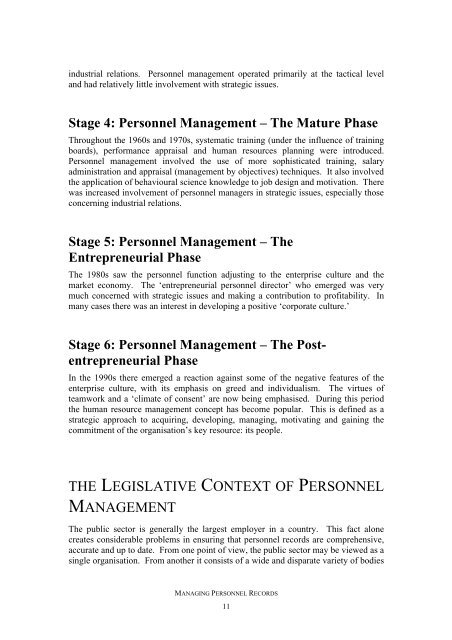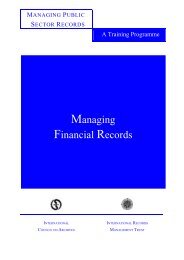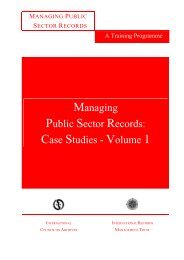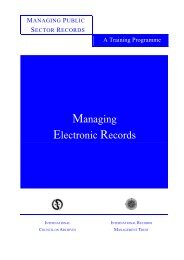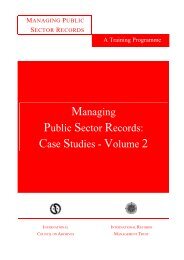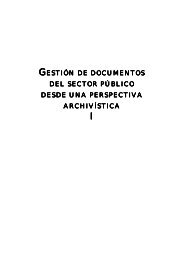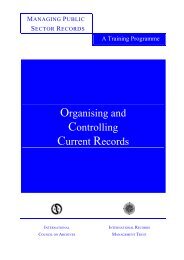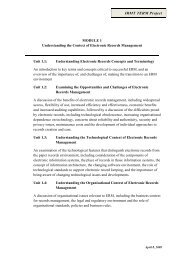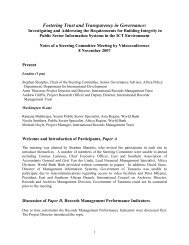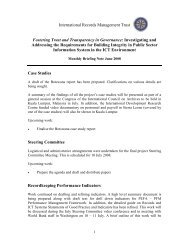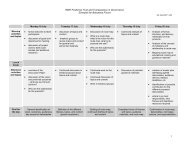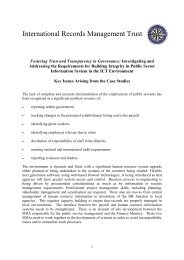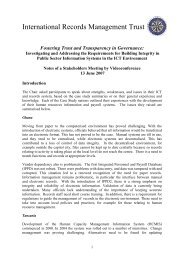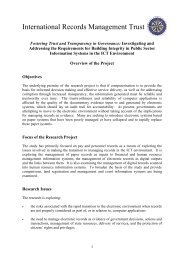Managing Personnel Records - International Records Management ...
Managing Personnel Records - International Records Management ...
Managing Personnel Records - International Records Management ...
Create successful ePaper yourself
Turn your PDF publications into a flip-book with our unique Google optimized e-Paper software.
industrial relations. <strong>Personnel</strong> management operated primarily at the tactical level<br />
and had relatively little involvement with strategic issues.<br />
Stage 4: <strong>Personnel</strong> <strong>Management</strong> – The Mature Phase<br />
Throughout the 1960s and 1970s, systematic training (under the influence of training<br />
boards), performance appraisal and human resources planning were introduced.<br />
<strong>Personnel</strong> management involved the use of more sophisticated training, salary<br />
administration and appraisal (management by objectives) techniques. It also involved<br />
the application of behavioural science knowledge to job design and motivation. There<br />
was increased involvement of personnel managers in strategic issues, especially those<br />
concerning industrial relations.<br />
Stage 5: <strong>Personnel</strong> <strong>Management</strong> – The<br />
Entrepreneurial Phase<br />
The 1980s saw the personnel function adjusting to the enterprise culture and the<br />
market economy. The ‘entrepreneurial personnel director’ who emerged was very<br />
much concerned with strategic issues and making a contribution to profitability. In<br />
many cases there was an interest in developing a positive ‘corporate culture.’<br />
Stage 6: <strong>Personnel</strong> <strong>Management</strong> – The Postentrepreneurial<br />
Phase<br />
In the 1990s there emerged a reaction against some of the negative features of the<br />
enterprise culture, with its emphasis on greed and individualism. The virtues of<br />
teamwork and a ‘climate of consent’ are now being emphasised. During this period<br />
the human resource management concept has become popular. This is defined as a<br />
strategic approach to acquiring, developing, managing, motivating and gaining the<br />
commitment of the organisation’s key resource: its people.<br />
THE LEGISLATIVE CONTEXT OF PERSONNEL<br />
MANAGEMENT<br />
The public sector is generally the largest employer in a country. This fact alone<br />
creates considerable problems in ensuring that personnel records are comprehensive,<br />
accurate and up to date. From one point of view, the public sector may be viewed as a<br />
single organisation. From another it consists of a wide and disparate variety of bodies<br />
MANAGING PERSONNEL RECORDS<br />
11


